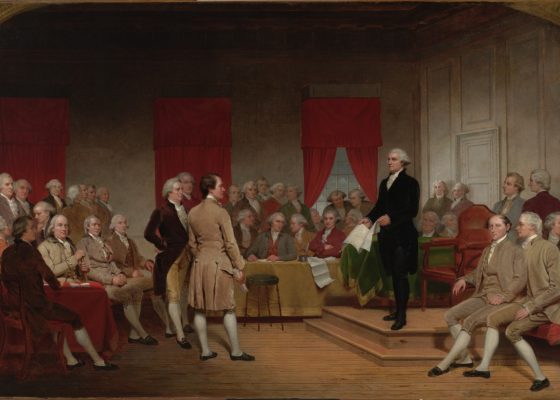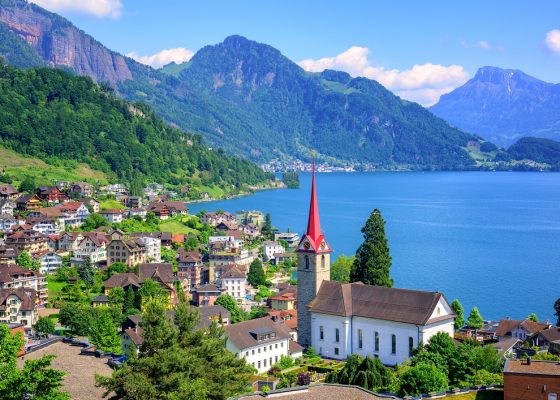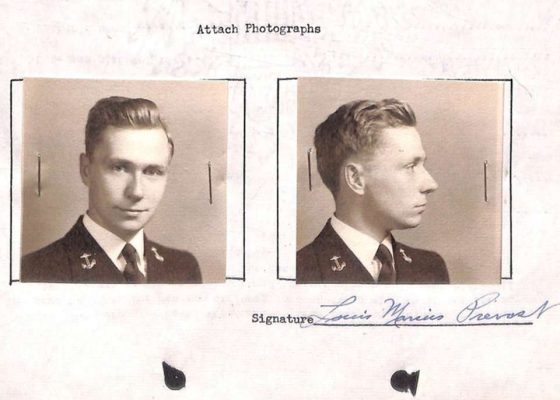
By Anthony Miller
Stefano di Giovanni, known as il Sassetta, (1392 – 1450 or 1451) was born in Siena, although there is also an hypothesis that he was born in Cortona. However, the first historical record of him was in Siena in 1423. Di Giovanni was probably the apprentice of Paolo di Giovanni Fei although it is also thought that he may have studied under Benedetto di Bindo. He painted in the semi-archaic Sienese School style of painting. Francesco di Giorgio e di Lorenzo, better known as Vecchietta, is said to have been his apprentice.
The date and place of his birth are uncertain. He seems to have been trained in Siena, and the force of the Sienese tradition is evident in the vivid colours and elegant use of line in the surviving panels of his first commissioned work, an altarpiece for the Arte della Lana in Siena (1423–26). His interest in the work of the first generation of Florentine Renaissance painters is reflected in the coherent spatial relationships of the monumental altarpiece of the “Madonna of the Snow,” painted for Siena Cathedral in 1430–32. From this point on, under Gothic influence, Sassetta’s style assumes an increasingly decorative character, manifest initially.
Echoes of Masaccio and Paolo Uccello can be seen in the great Crucffix painted (probably in 1433) for the church of San Martino in Siena, some fragments of which are in the Chigi Saracini Collection, and in the polyptych of the church of San Domenico at Cortona. These are works that herald the condensed and yet vibrant sculptural precision of this painter’s later style. This precision is represented by the San Sepolcro Altarpiece, the great polyptych on which the artist worked from 1437 to 1444 for the Franciscan church of Borgo San Sepolcro, and which was dismembered at the beginning of the last century. It is Sassetta’s masterpiece and a work of capital importance for Sienese painting in the 15th century. While working on a huge Coronation of the Virgin in fresco above the gate of Porta Romana in Siena, the painter caught pneumonia and died of it on April 1 st, 1450. The fresco was completed by Sano di Pietro, but was almost entirely destroyed during the war in 1944.
Sassetta had numerous followers who would contribute to influencing later Sienese painting: among them Sano di Pietro, Pietro di Giovanni d’Ambrogio and the Master of the Observance.

Sassetta’s interest in Florentine art is evident in his monumental Madonna of the Snow altarpiece for Siena Cathedral (1430 – 32) and in his most ambitious work, an altarpiece for San Francesco at Sansepolcro (1437 – 44). His fusion of traditional and contemporary elements transformed Sienese painting from the Gothic to the Renaissance style, and he is considered one of the greatest Sienese painters of the 15th century.
On March 25, 1430, Sassetta was commissioned to paint an altarpiece of the Madonna with Saints with the legend of the founding of S. Maria Maggiore, Rome, in the predella. The Madonna of the Snow, as it is called, was finished by mid-October 1432. His style in this work betrays the influence of Masaccio, especially in the broad modeling of the Virgin and Child and in the arrangement of figures in the predella. Little is known of Sassetta’s activities between 1433 and 1436, though this is the period when he probably painted the Crucifixion for S. Martino (of which fragments remain) and the altarpiece for S. Domenico, Cortona.
The altarpiece of the Madonna with Saints Jerome and Ambrose, dated 1436, in the Church of the Osservanza, Siena, formerly attributed to Sassetta, is now generally attributed to another artist, the so-called Osservanza Master. Some critics would extend the oeuvre of the Osservanza Master to include the Birth of the Virgin in Asciano and the group of panels with the life of St. Anthony Abbot from an altarpiece dedicated to the saint.
Madonna delle Nevi

This altarpiece, known from its subject as the Madonna delle Nevi (the Madonna of the Snows) was originally commissioned for one of the oldest and most venerable altars in the Siena cathedral. It stood immediately left of the doorway known as the Porta del Perdono – the side entrance to the cathedral that provided most immediate access to both the baptistery and to the civic centre of the Palazzo Pubblico and the Campo.
Sassetta received the commission in 1430 from Ludovica Bertini, the widow of Turino di Matteo, the man responsible for both the cathedral sacristy and the baptismal font. Sassetta came up with an altarpiece in which a gothic baldachin was combined with an innovative, unified rectangular picture surface, while its construction was based on that of Duccio’s doublesided high altarpiece, completed for the same Siena Cathedral in 1311. According to one local chronicler, Turino had died in 1423 and been buried in front of the Porta del Perdono. In the contract for the altarpiece, Ludovica makes it clear that she is commissioning the work both in memory of her husband and also in her own right as a pious Franciscan tertiary, so the coat-of-arms of her own family as well as that of her husband appear prominently displayed on the richly ornamented fabric covering the Virgin’s throne. Her commitment to the Franciscan Order is clearly demonstrated by the inclusion of Saint Francis in the right foreground of the main panel of the altarpiece. The imagery chosen for the rest of the altarpiece, however, was entirely Sienese and civic in intention. It depicts the familiar subject of the enthroned Virgin with the Christ Child on her lap and surrounded by angels and saints. The altarpiece therefore echoes the imagery of two of Siena’s most revered civic icons – the front face of Duccio’s high altarpiece for the cathedral and Simone Martini’s mural in the council hall of the Palazzo Pubblico. That such an association was explicitly intended is shown by the inscription engraved on the Virgin’s halo: ‘If you trust me, Siena, you will be full of favour’.

The imagery of the altarpiece was elaborated in order to honour two of the Virgin’s titles – ‘Queen of Heaven’ and ‘Our Lady of the Snows’. Two angels behind the throne hold a crown over the Virgin’s head. The angel on the left of the throne, meanwhile, carries a dish filled with snow and the angel on the right makes a snowball. The seven narrative scenes of the predella describe in detail the legend of Our Lady of the Snows. They show how, in the reign of Pope Liberius (352-66), the Virgin caused snow to fall miraculously in the heat of August on the Esquiline Hill in Rome. Furthermore, the snow fell precisely in the pattern of the ground plan of a church. The Virgin then instructed a wealthy layman and his wife, and Pope Liberius, to build a church in her honour on this site – a church that became Santa Maria Maggiore, one of Rome’s major basilicas.
Quite unlike the hieratic aura of the main scene, the predella panel recording the miracle of the snow in founding of Santa Maria Maggiore in Rome, is full of naturalistic elements, and even the arrangement and presentation of the figures is casual and almost journalistic. Although the condition of the predella is not as good as that of the main panel, the atmospheric environment created for the outdoor scene is still legible.
Arte della Lana Altarpiece (Altar of the Eucharist)



The Arte della Lana Altarpiece, the first known work by Sassetta, was commissioned by the “Arte della Lana”, i.e. the woolmerchants’ guild for the church of the Carmelite Order in Siena in 1423. Sassetta’s Wool Guild altarpiece was an ingeniously movable yet highly elaborate gothic triptych that the guild used for its outdoor celebration of the Feast of Corpus Domini and otherwise stored in its palace.
The triptych was dissembled in 1777, and the central panel is lost, but it is possible to reconstruct its original arrangement from earlier descriptions. According to these, the central panel represented the Holy Sacrament in an ostensory adored by a number of angels around it. Above this there was the scene of the Coronation of the Virgin, and on the sides Abbot S. Anthony and S. Thomas Aquinas were depicted. Above these the scene of the Annunciation was represented in two separate pictures.
On the predella underneath the main panel, seven small panels showed the following scenes: 1-2. Two scenes from the life of S. Anthony, one of them is about his temptation (Siena, Pinacoteca); 3. Execution of an Heretic on the Bonfire (Melbourne Museum); 4. The Last Supper (Siena, Pinacoteca); 5. The Miracle of the Holy Sacrament (Barnard Castle, Bowes Museum); 6. S. Thomas Aquinas in Prayer in front of the Altar of the Virgin (Budapest, Museum of Fine Arts); 7. S. Thomas Aquinas in Prayer in front of the Crucifix (Vatican, Pinacoteca).
Further to the above mentioned ones we know eight panels from the external pillars that represented the Four Doctors of the Church: S. Jerome, Gregory, Ambrose, Augustine as well as the four patron saints of Siena: S. Ansanus, Victor, Savinus and Crescentius. Two small panels from the pinnacles with the figures of the Prophets Elias and Eliseus still exist in the Sienese Picture Gallery. Under the central panel the following inscription was visible: “Hinc opus omne Patres Stefanus construxit ad aras Senensis Johannis agens citra lapsus adultos”. The interpretation of this distych is much debated.
The iconographic programme of the altar was probably composed by the Carmelite monks. That is why the two prophets, Elias and Eliseus, the “Dux et Pater” and the Pater of the Carmelites were represented on the altar, and in Carmelite habit. We can also see a few Carmelite monks in the pictures of the predella.
Sassetta, here shows that he was in touch with all the most recent tendencies of European late-Gothic (which probably came to him by way of the exquisite painting of Masolino da Panicale), while at the same time he went further with the Lorenzetti’s intuitions of space, adding realistic features unknown to the previous tradition.
Thus, for example, in the St. Antony Beaten by Devils (one of the panels of the above-mentioned predella), the depth and articulation of the landscape is for the first time seen against a blue sky streaked with white clouds, instead of the customary gold background In the Adoration of the Magi in the Chigi Saracini Collection in Siena, a fragment of a larger composition which included the Journey of the Magi in the Griggs Collection in New York, we clearly see that Sassetta was greatly attracted by the art of Gentile da Fabriano, who spent some time in Siena in 1425 and 1426. But it is with the great altar-frontal of the Madonna della Neve, painted in 1430-32 for the Cathedral of Siena and now in the Contini Bonacossi Foundation (Uffizi), that he clearly shows how far he adhered to the “great Florentine concepts of form in perspective” (Graziani), even if these do not have much effect on the composition, but rather tend to stimulate occasional brilliant innovations.

The small panel, A Miracle of the Sacrament or A Miracle of the Eucharist by Sassetta, painted in Siena c1423-25, has a dramatic tale to tell. It shows a cleric, struck dead as he is offered the Host during Mass. Even more dramatically, a devil swoops down to snatch his soul as it leaves his body.
The predella (narrative) panel from the Arte del Lana altarpiece is one of the oldest and most intriguing paintings in The Bowes Museum’s collection. Other panels exist in Rome, Budapest, Siena and Melbourne altar.
To the right, a Carmelite lay brother has been struck dead, and just above him, a devil is carrying away his soul. The consecrated Host is bleeding, indicating perhaps that the lay brother had doubted the real presence of Christ in the Eucharist.

Says the MET regarding this work: The vase of lilies, prominently placed between the Angel Gabriel and the Virgin in this Annunciation scene, symbolizes both the Virgin’s purity as well as Christ’s Incarnation. The panel was originally part of the highly celebrated altarpiece that Sassetta, the renowned Sienese artist, painted between 1437 and 1444 for the Franciscan church of Borgo San Sepolcro in Arezzo. The Annunciation formed the central pinnacle on the back side of this multi-paneled, double-sided altarpiece. The panel has been the subject of considerable abrasion, repainting, and has been cut down in size.

Says the MET regarding this work:In this small, domestic altarpiece the Virgin is shown at once humble (seated on the floor) and exalted, as angels crown her Queen of Heaven. Her exquisite, doll-like features are characteristic of Sassetta’s work, as is the emphasis on painting in transparent layers over the gold background. The attached frame is mostly modern.
Original publication: Art in Tuscany









Cancel anytime


Using our website
You may use the The Middle Land website subject to the Terms and Conditions set out on this page. Visit this page regularly to check the latest Terms and Conditions. Access and use of this site constitutes your acceptance of the Terms and Conditions in-force at the time of use.
Intellectual property
Names, images and logos displayed on this site that identify The Middle Land are the intellectual property of New San Cai Inc. Copying any of this material is not permitted without prior written approval from the owner of the relevant intellectual property rights.
Requests for such approval should be directed to the competition committee.
Please provide details of your intended use of the relevant material and include your contact details including name, address, telephone number, fax number and email.
Linking policy
You do not have to ask permission to link directly to pages hosted on this website. However, we do not permit our pages to be loaded directly into frames on your website. Our pages must load into the user’s entire window.
The Middle Land is not responsible for the contents or reliability of any site to which it is hyperlinked and does not necessarily endorse the views expressed within them. Linking to or from this site should not be taken as endorsement of any kind. We cannot guarantee that these links will work all the time and have no control over the availability of the linked pages.
Submissions
All information, data, text, graphics or any other materials whatsoever uploaded or transmitted by you is your sole responsibility. This means that you are entirely responsible for all content you upload, post, email or otherwise transmit to the The Middle Land website.
Virus protection
We make every effort to check and test material at all stages of production. It is always recommended to run an anti-virus program on all material downloaded from the Internet. We cannot accept any responsibility for any loss, disruption or damage to your data or computer system, which may occur while using material derived from this website.
Disclaimer
The website is provided ‘as is’, without any representation or endorsement made, and without warranty of any kind whether express or implied.
Your use of any information or materials on this website is entirely at your own risk, for which we shall not be liable. It is your responsibility to ensure any products, services or information available through this website meet your specific requirements.
We do not warrant the operation of this site will be uninterrupted or error free, that defects will be corrected, or that this site or the server that makes it available are free of viruses or represent the full functionality, accuracy and reliability of the materials. In no event will we be liable for any loss or damage including, without limitation, loss of profits, indirect or consequential loss or damage, or any loss or damages whatsoever arising from the use, or loss of data, arising out of – or in connection with – the use of this website.
Last Updated: September 11, 2024
New San Cai Inc. (hereinafter “The Middle Land,” “we,” “us,” or “our”) owns and operates www.themiddleland.com, its affiliated websites and applications (our “Sites”), and provides related products, services, newsletters, and other offerings (together with the Sites, our “Services”) to art lovers and visitors around the world.
This Privacy Policy (the “Policy”) is intended to provide you with information on how we collect, use, and share your personal data. We process personal data from visitors of our Sites, users of our Services, readers or bloggers (collectively, “you” or “your”). Personal data is any information about you. This Policy also describes your choices regarding use, access, and correction of your personal information.
If after reading this Policy you have additional questions or would like further information, please email at middleland@protonmail.com.
PERSONAL DATA WE COLLECT AND HOW WE USE IT
We collect and process personal data only for lawful reasons, such as our legitimate business interests, your consent, or to fulfill our legal or contractual obligations.
Information You Provide to Us
Most of the information Join Talents collects is provided by you voluntarily while using our Services. We do not request highly sensitive data, such as health or medical information, racial or ethnic origin, political opinions, religious or philosophical beliefs, trade union membership, etc. and we ask that you refrain from sending us any such information.
Here are the types of personal data that you voluntarily provide to us:
As a registered users or customers, you may ask us to review or retrieve emails sent to your business. We will access these emails to provide these services for you.
We use the personal data you provide to us for the following business purposes:
Information Obtained from Third-Party Sources
We collect and publish biographical and other information about users, which we use to promote the articles and our bloggers who use our sites. If you provide personal information about others, or if others give us your information, we will only use that information for the specific reason for which it was provided.
Information We Collect by Automated Means
Log Files
The site uses your IP address to help diagnose server problems, and to administer our website. We use your IP addresses to analyze trends and gather broad demographic information for aggregate use.
Every time you access our Site, some data is temporarily stored and processed in a log file, such as your IP addresses, the browser types, the operating systems, the recalled page, or the date and time of the recall. This data is only evaluated for statistical purposes, such as to help us diagnose problems with our servers, to administer our sites, or to improve our Services.
Do Not Track
Your browser or device may include “Do Not Track” functionality. Our information collection and disclosure practices, and the choices that we provide to customers, will continue to operate as described in this Privacy Policy, whether or not a “Do Not Track” signal is received.
HOW WE SHARE YOUR INFORMATION
We may share your personal data with third parties only in the ways that are described in this Privacy Policy. We do not sell, rent, or lease your personal data to third parties, and We does not transfer your personal data to third parties for their direct marketing purposes.
We may share your personal data with third parties as follows:
There may be other instances where we share your personal data with third parties based on your consent.
HOW WE STORE AND SECURE YOUR INFORMATION
We retain your information for as long as your account is active or as needed to provide you Services. If you wish to cancel your account, please contact us middleland@protonmail.com. We will retain and use your personal data as necessary to comply with legal obligations, resolve disputes, and enforce our agreements.
All you and our data are stored in the server in the United States, we do not sales or transfer your personal data to the third party. All information you provide is stored on a secure server, and we generally accepted industry standards to protect the personal data we process both during transmission and once received.
YOUR RIGHTS/OPT OUT
You may correct, update, amend, delete/remove, or deactivate your account and personal data by making the change on your Blog on www.themiddleland.com or by emailing middleland@protonmail.com. We will respond to your request within a reasonable timeframe.
You may choose to stop receiving Join Talents newsletters or marketing emails at any time by following the unsubscribe instructions included in those communications, or you can email us at middleland@protonmail.com
LINKS TO OTHER WEBSITES
The Middle Land include links to other websites whose privacy practices may differ from that of ours. If you submit personal data to any of those sites, your information is governed by their privacy statements. We encourage you to carefully read the Privacy Policy of any website you visit.
NOTE TO PARENTS OR GUARDIANS
Our Services are not intended for use by children, and we do not knowingly or intentionally solicit data from or market to children under the age of 18. We reserve the right to delete the child’s information and the child’s registration on the Sites.
PRIVACY POLICY CHANGES
We may update this Privacy Policy to reflect changes to our personal data processing practices. If any material changes are made, we will notify you on the Sites prior to the change becoming effective. You are encouraged to periodically review this Policy.
HOW TO CONTACT US
If you have any questions about our Privacy Policy, please email middleland@protonmail.com
The Michelin brothers created the guide, which included information like maps, car mechanics listings, hotels and petrol stations across France to spur demand.
The guide began to award stars to fine dining restaurants in 1926.
At first, they offered just one star, the concept was expanded in 1931 to include one, two and three stars. One star establishments represent a “very good restaurant in its category”. Two honour “excellent cooking, worth a detour” and three reward “exceptional cuisine, worth a
Thank you for your participation,
please Log in or Sign up to Vote

123Sign in to your account